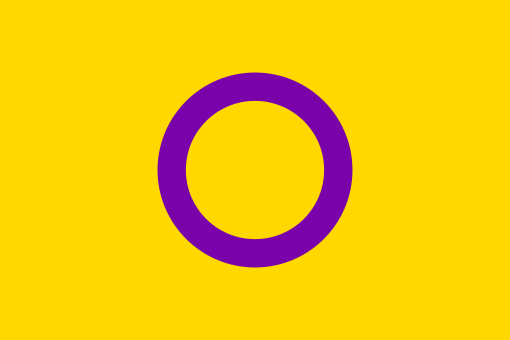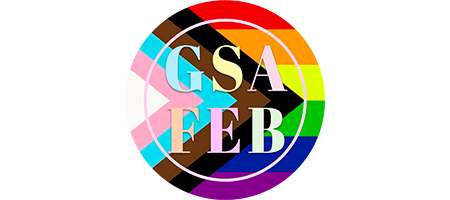Gender Identities
What is gender? Or a gender identity? And how does it differ from one’s sex? On this page we talk about everything surrounding sex and gender. Are you interested in learning more? Then you are in the right place!
Sex versus Gender:
Sex generally refers to a person’s biological status. This status is typically assigned at someone’s birth, based on their external anatomy. Therefore, someone’s sex is usually categorised as male, female or intersex. Contrary, gender is often defined as a social construct of norms, behaviours and roles. These can vary between society and different periods of time. Gender is often characterised as male, female or non-binary.
A person’s gender identity is one’s internal sense of self and their gender. This is not outwardly visible to other. People can identify as a man, woman, neither, both, or have any other gender identity. For the majority of the people, their gender identity aligns with the sex they were assigned at birth. However, this does not have to be the case. On this page we talk a bit more about the instances when gender identity and sex might not always overlap.
Transgender
Details
Cis and Trans:
The term “transgender” is used to refer to individuals whose gender identity does not correspond with the sex assigned to them at birth. Trans comes from the Latin prefix meaning “on the opposite side as”. Transgender therefore means a different gender than assigned at birth. The term transgender can refer to anyone whose gender identity differs from their sex assigned at birth, thus also including nonbinary, genderfluid, intersex, and other gender nonconforming people.
People whose gender identity is the same as the sex registered for them at birth are known as being cisgender. Cis comes from the Latin prefix meaning “on the same side as”. Cisgender therefore means the same gender as the one assigned at birth. While the terms cis and trans are mainly used in Chemistry, in recent years they have been used to regard gender identity.
FTM and MTF:
When talking about people in the trans community, the acronyms FTM and MTF are used a lot, but what do they mean? FTM refers to trans men, meaning individuals who identify as men but were assigned female at birth. FTM literally means “female-to-male”. MTF, on the other hand, refers to trans women, meaning individuals who identify as women but were assigned male at birth. MTF literally means “male-to-female”.
Some famous people that identify as trans are Brian Michael Smith, the actor known for playing firefighter Paul Strickland on 9-1-1: Lone Star, amongst others, Laverne Cox, the actress known for playing Sophia Burset in Orange is the New Black, and Dutch makeup artist and beauty vlogger Nikkie de Jager, better known as NikkieTutorials.
The Trans flag:
The transgender flag was proposed in 1999 by Monica Helms to represent the trans community, organisations, and individuals. It is used as a symbol of transgender pride and diversity, as well as transgender rights. The colours of the flag are composed in such a way that no matter how the flag is flown, it will always be correct. The shades have the following meaning:
Light blue: Represents boys;
Light pink: Represents girls;
White: Represents those who are transitioning, those with a neutral gender or no gender, and those who are intersex.
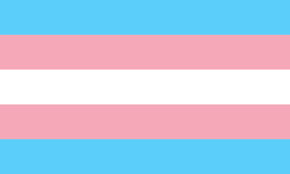
Non-binary
Details
The term Non-binary refers to individuals with a gender identity that is not exclusively female or male and does not fit within the gender binary. The gender binary is the model that classifies all people into either strictly female or male. While non-binary can be used as an umbrella term to refer to any gender identity outside the gender binary (e.g., genderqueer, gender, genderfluid, bigender), for some non-binary is as specific as they want to get about labelling their gender identity. The term non-binary is also often shortened to NB or enby.
Moreover, non-binary is a part of the transgender umbrella because the gender identity of these people differs from the one assigned to them at birth. However, not everyone who is trans is non-binary and not everyone who is non-binary identifies with the trans experience (e.g., they may partially identify with the gender corresponding to their sex assigned at birth). As is, the transgender umbrella can be broadly divided into 2 categories:
Binary: Indicating the people who identify as men or women but whose sex assigned at birth does not correspond to this gender identity; or
Non-binary: Indicating the people whose gender identity is outside of the gender binary, so those who do not identify as a man or a woman.
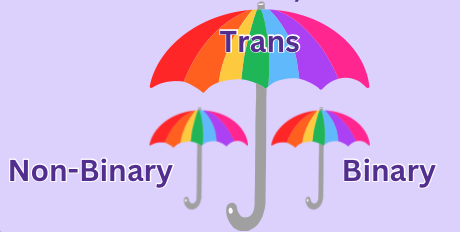
Some famous people that identify as non-binary are Puerto Rican actor Vico Ortiz, Hairstylist, television personality, and podcast host Jonathan Van Ness, and American actor Amandla Stenberg.
The Non-binary flag:
The non-binary flag was created in 2014 by Eye Rowan. The flag was created to represent non-binary people who did not feel that the genderqueer flag represented them. The Genderqueer identity relates to someone who doesn’t subscribe to conventional gender distinctions, but identifies with neither, both, or a combination of male and female genders. While closely related to non-binary, the two gender identities are distinct gender identities. The genderqueer flag consists of a lavender, white, and light green flag and was created by Marilyn Roxie. The non-binary flag was intended to go alongside the genderqueer flag rather than replace it. The colours have the following meaning:
Yellow: Represents people whose gender exists outside of the gender binary;
White: Represents people with all genders or many genders;
Purple: Represents people with genders that may be a mix of male and female;
Black: Represents people that identify as not having any gender at all.
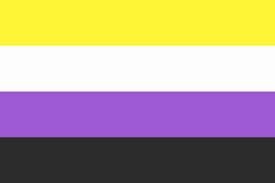
Intersex
Details
The term “Intersex” generally refers to a variety of conditions in which a person is born with reproductive or sexual anatomy that doesn’t seem to fit the typical definitions of female or male.
Intersex conditions:
Intersex people can have several or any sex characteristics that differ from typical (binary) male or female bodies, including differences in:
- Chromosomes: Threadlike structures made of protein and a single molecule of DNA that carry genomic information from cell to cell;
- Gonads: Glads that produce hormones involved in reproduction and other functions of the body. Examples include the testes and ovaries;
- Hormones: Regulatory substances produced to stimulate specific cells or tissues into action. Estrogen and testosterone are examples of hormones;
- Genitals: a person’s internal and external reproductive organs, such as ovaries, the vagina, and the penis.
There are many ways in which someone can be intersex. Some intersex people may for instance have both ovarian and testicular tissue, or have differing chromosomes such as XXY instead of typically female chromosomes, XX, or typically male chromosomes, XY.
While intersex anatomy can show up at birth, such as ambiguous genitals, other intersex conditions (e.g., atypical chromosomes) aren’t established until puberty, or sometimes only when autopsied after death. Some intersex people live their entire lives without anyone (including themselves) ever knowing they are intersex.
Examples of well-known intersex individuals include Morgan Carpenter, bioethicist, intersex rights activist and researcher, River Gallo, actor, model, filmmaker and intersex rights activist, and Sean Saifa Wall, researcher and intersex rights activist.
Intersex Awareness Day:
Intersex Awareness Day is an annual day bringing awareness to the continuing issues intersex people face. These issues include discrimination, stigmatisation, infanticide, unwanted genital surgeries, and sterilisation, among other issues. While progress has been made in the recognition of these issues as human rights abuses, there is still ways to go to eliminate the existence of these issues.
The intersex flag:
The intersex flag was created in July 2013 by Morgan Carpenter, the Executive Director of Intersex Human Rights Australia. The flag was created for the intersex community so they would have a flag that was not derivative but still firmly grounded in meaning. In 2021, the intersex flag was added to the Progress Pride Flag. The shades have the following meaning:
Yellow and purple: These colours were chosen because they were viewed free from gender associations and are historically used to represent intersex people;
The circle: Symbolises wholeness and completeness, and the potentialities of intersex people.
